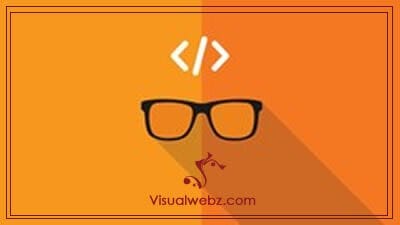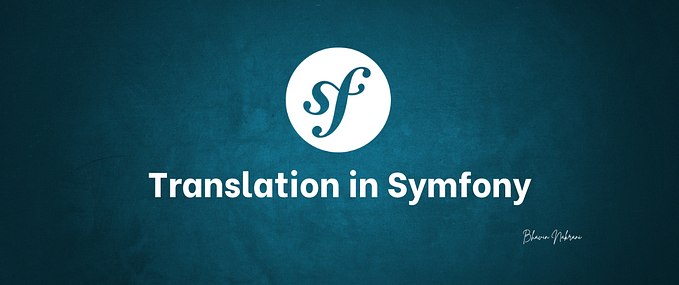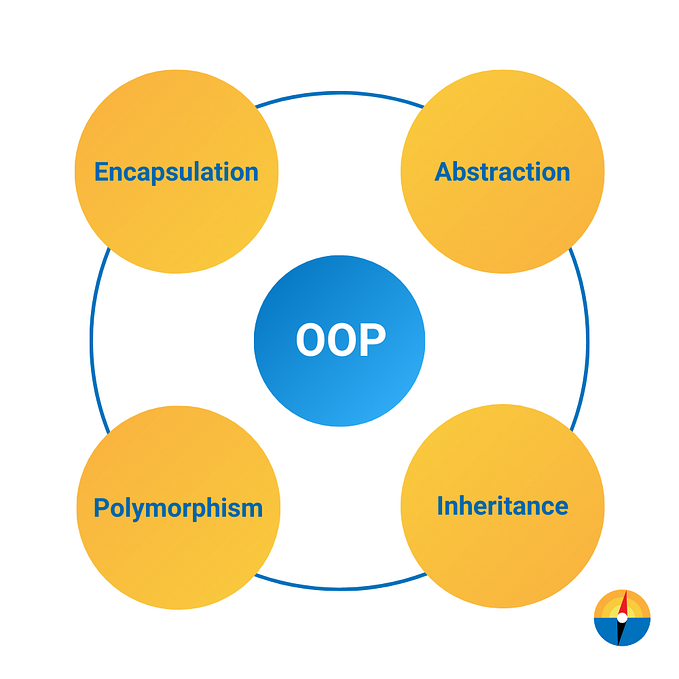A Bit About PHP
PHP is an all-around general-purpose scripting language geared toward web development. Danish-Canadian programmer Rasmus Lerdorf created it in 1994. The PHP Group now delivers the PHP reference performance. PHP initially stood for Personal Home Page, but it now stands for the recursive initialism PHP: Hypertext Preprocessor.

The Creation of PHP
The first type of what arrived to be PHP was designed in 1995 by Rasmus Lerdorf. An engineer at Yahoo!, Rasmus required something to make it more comfortable and leisurely to build content on his website. It would serve well with HTML yet give him strength and flexibility, exceeding what HTML could offer him. He required an easy way to compose scripts that would run on his webserver to make content and handle data given back to the server from the web browser. Utilizing the Perl language, he created some technology that showed him what he needed and chose to call this technology “Personal Home Page/Forms Interpreter.” The technology delivered a suitable way to process web documents and build content.
The name is recursive because the full name contains the acronym “PHP” — an abnormal geeky joke shared in technology circles when people have a problem naming something. “Personal Home Page/Forms Interpreter” was later abbreviated to PHP/FI and ultimately represented “PHP: Hypertext Preprocessor.” GNU is another recursive name that means “GNU’s Not Unix.”
PHP/FI version 1.0 was never operated outside of Rasmus’ website. With the opening of PHP/FI 2.0, this started to change. When PHP 3 got released in 1997, the adoption of PHP blasted beyond all belief.
By the period 1997 arrived, the number of websites on the internet was increasing exponentially, and most of these websites were being executed and enforced operating the Apache webserver. This time, Andy Gutmans and Zeev Suraski established the PHP 3 project and planned to take PHP to the next level. One of the key accomplishments of the PHP 3 project was to enforce PHP as a robust Apache Module.PHP 3 was implemented utilizing a modular system that made it easy for others to develop and expand functionality and also taught the first elements of object orientation that would persist to evolve through successive releases.
The variety of PHP 3 and Apache quickly directed the widespread adoption of PHP. It is generally assessed that PHP3 was used to influence over 10% of all websites on the internet at its peak adoption class.
PHP is one of the multiple famous server-side scripting languages in reality today. The language can articulate back and forth with a server and construct a passionate and active web page for the user. I can ensure that PHP is installed if you have a web hosting account to run your blog or website. If you want to become a web developer, PHP is a must for you and will permit you to create dynamic web pages based on external input, mainly from the user. Even the page you are examining throughout your days was created by PHP. It is also essential to note that PHP is an object-oriented programming language, and O.O.P. will protect and cover it in the series.
The syntax of the PHP language is relatively comparable to the C language; here are some essential features of that PHP.
1. MVC Architecture:
PHP functions on Model View Architecture that separates the model, view, and controller files and helps manage the code. It helps connect the database, and modifications can be made without impacting additional modules.
2. Frameworks:
PHP has frameworks such as Symfony, Aura, Laravel, and Zend Engine. The framework aids in reaching effortless, neat, and clean code, which causes the expansion process to be more comfortable for the architects.
3. Web Server:
PHP is primarily performed on Apache server and web server software.
4. Database:
PHP is predominantly used with MySQL. Nevertheless, it can be utilized with any database.
5. PHP Parser:
This fragment of PHP is to parse the PHP education and instruction to HTML code and then sends it to a web-based browser to display the content.
6. Autosuggest:
The autosuggest element uses PHP and database MySQL to make a detail ready to execute the search.
7. Filters:
Filters are used to validate the data utilizing the filter process in PHP. The filter operation helps check the invalid input submitted to avoid the break of web pages and safety problems.
8. System Functions:
In PHP, the system function is to open, construct, read and report the file in the works.
9. Handle Forms:
In PHP, the forms can tolerate the data from files, reciprocate data to the user, keep the data and transmit the e-mail. PHP can encrypt and select the cookie variable. With the support of PHP, a developer can discourage the user from using that particular carrier.
PHP is one of those programming languages which includes built-in web capabilities. PHP code can be seamlessly embedded into the HTML code through the Script tag. However, web developers can only write complex applications running PHP code via various frameworks.
In complement to assisting with fast and quick web application development, the PHP frameworks facilitate web application development by delivering a basic structure. The parts and tools provided by these web frameworks help designers conduct web application development without writing extended code and adding functionality to the web application.
Developers also can choose from an expansive range of unlicensed PHP frameworks. Some of these frameworks are microframeworks, during different full-stack web frameworks.
Here are a few benefits and drawbacks of the PHP framework, which will help you understand the language.
1. The MVC Pattern:
The Model-View-Controller Architectural design of the PHP framework assists you in managing your code for effortless upkeep. PHP framework authorizes you to save data exploiting logic different and distinct from the bits that control the display, creating it easy to modify the underlying code without feeling the other.
2. Faster development:
PHP frameworks help you make a short, medium-sized application much faster than composing something from scrape. If you want to finish any assignment quickly, you can use a framework to complete the items before time passes.
3. Efficient Unit testing:
Developers must complete unit testing regularly to consider a unique component of a business web application. Many web developers utilize the PHP unit to complete the examination efficiently. In extra to being an object-oriented unit examining the framework for PHP, PHP Unit aids designers in writing and executing tests by code service. Many PHP frameworks allow programmers to complete their task of unit testing smoothly and support PHP units natively.
4. Bundled Classes:
One framework contains crucial functions and classes for day-to-day tasks such as database access, form pagination, handling, etc. Moreover, little things like trampling a specific word count’s text evolve quickly with PHP-bundled courses.
5. Cross-Platform:
PHP is an application is something that can be run on different platforms. One of the most important benefits of using PHP is that the developer must not be concerned about working. The PHP code can run without any mistakes on any operating system. To complement this, you can notice PHP hosting assistance providers and server-side scripting language quickly.
6. Good Coding Standard:
Another benefit of using a PHP framework is maintaining the coding average efficiently. The coding pattern is a set of procedures for any distinctive programming language that suggests practices, methods, and programming techniques. Using the PHP framework renders it comfortable for you to code.
7. Security:
The built-in components and tools of the PHP framework make it straightforward to cover applications from safety and security hazards and exterior applications. Security risks can be information manipulation, SQL injection, fraud, etc. Designers utilize the PHP framework to bypass such protection threats containing security perils to develop a web application.
Drawbacks of the PHP framework using:
1. Unwanted Code:
You will usually find the code library of PHP sufficed with undesirable code. This may lead to the unhurried working of the server.
2. Not suitable for extensive application:
It isn’t easy to use a PHP framework for tremendous programming applications. Since the programming language is not positively modular, keeping multiple PHP applications can be challenging.
3. Outer/External Dependency:
A framework for your application is constantly externally dependent as it is owned by anyone different than you. In every case, this is not a situation, but building the software as a central part of your business is worth considering.
PHP code is mainly processed on a web server by a PHP interpreter executed as a module, a daemon, or Common Gateway Interface (CGI) executable. The effect of the decoded and implemented PHP code on a web server — any data, such as rendered HTML or binary image data — would form the full or part of an HTTP reaction. Various web template designs and systems, web content managing systems, and frameworks can produce, create, or facilitate that reaction. Also, PHP can be used for many programming studies or tasks outside the web context, such as standalone illustrated applications and motorized drone power. PHP code can even be directly conducted from the control line.
Different Types of Loops in PHP.
Loops are used to constantly run the same code block as long as a typical requirement is met. The basic idea after a loop is to automate the redundant tasks within a program to conserve time and effort. PHP sustains four various kinds of loops.
- While — loops via a code block if the situation specified estimates right.
- Do…while — the block of code performed once, and then the condition is considered. If the state is correct, the information is recited if the specified situation is true.
- For — loops via a code block until the counter gets a specified numeral.
- foreach — loops via a block of code for each element in a display.
PHP is not the language to leap directly into if you have no knowledge or experience. Getting a hold of the fundamental programming concepts might be more leisurely and comfortable in a language such as Visible Basic, as the syntax and ideas in PHP might be illogical and confusing for a novice. If you do not understand scripting, I suggest examining JavaScript, a client-side scripting language, and limiting it to PHP. But don’t let that scare you, PHP teaches some great coding habits, and if you can pick things up quickly, it should be fine.
Example:
<?PHPecho ‘Welcome to my website’;?>
Steps:
How to run PHP files without the extension. PHP
Access. • First, you will have to open the FTP file, the file transfer protocol. Open this program and start typing your username and password to log into the website’s root directory. You will have to locate the .htaccess file and download it to your computer. You must open the text editor and make a web file if you do not find the .htaccess file inside the root directory.
• Now, you can open the file .htaccess or the new file you just created. You will find this file beneath the code, start typing ‘addtypeapplication/x-HTTPd-PHP.htm.html’ and then press the ‘enter’ button.
• Start typing ‘add handler x-Httpd-PHP.htm.html’ on a new line. Save the file correctly, and then you can close the text editor.
• Now, you will have to upload the file from the FTP program, in the root directory, by overwriting the existing file .htaccess if required. If you have created the ‘web. Access the file, then upload that file, right-click on the file, and select the rename’ option. You will have to delete the web portion from the name so that it only reads .htaccess, and then you can click ‘ok.’
• Open the web browser and direct this file to any HTML or H.T.M. page where you can execute the PHP code. If you are hosting your web browser, then restart it to start the PHP code in HTML or H.T.M. files. The new .htaccess file will begin working immediately, or the code may create after some time, depending on your hosting web service.
Tips and Cautions:
• Always recall backing up your .htaccess file before making any changes.
• You will have to rename the ‘web. Access the file to ‘.htaccess’ after you have uploaded it on the web server.
• If you have an existing file .htaccess, add the new file to this, but consistently recognize that you must not overwrite the current file, or the different settings might cease working. You must invariably be cautious with your .htaccess file and take help from your host if you face any issues.
• Anything inside your HTML files which starts with’;?>
Takeaway
In conclusion, PHP is a complex programming language to do. It is also essential for web developers and web pages because it is a script that can communicate back and forth with a server and construct a user-friendly and engaging website. PHP is one of the most popular server-side scripting languages today, and starting is a complex but knowledgeable path. Even though it has some drawbacks, it is relatively easy to evade them and use these drawbacks to your advantage because that’s what makes PHP good and a complex language.










